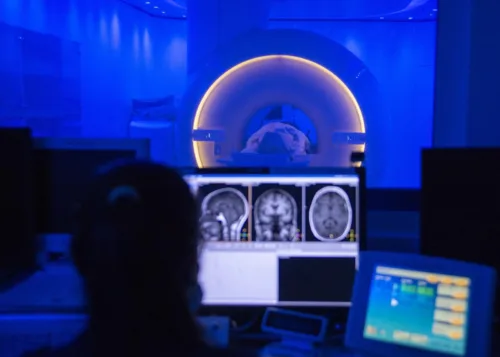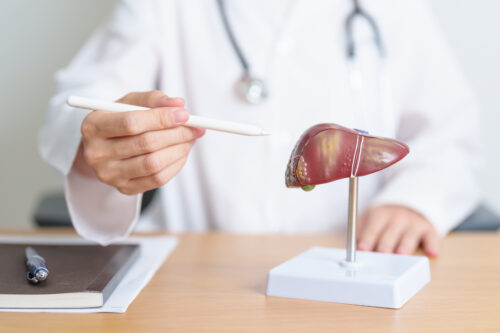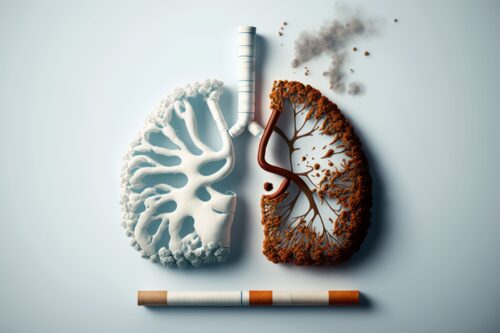8 major early symptoms of nasopharyngeal cancer revealed: why is it often overlooked? Many people are unaware of the importance of early symptoms of nasopharyngeal cancer. In fact, when detected early, the cure rate of nasopharyngeal cancer is very high—up to 90% in Stage I. Unfortunately, due to its subtle early signs, patients often mistake it for chronic or allergic rhinitis, leading to diagnosis only at mid to late stages.
In this article, we will explore the symptoms, causes, and detection methods of nasopharyngeal cancer to help you identify this disease—ranked 11th among fatal cancers in Hong Kong—at an early stage. The new Take2 Prophecy™ test offers high sensitivity (over 97%), enabling early detection even in asymptomatic individuals.
Care about your health—get regular check-ups, especially if you have relevant risk factors. Early detection can save lives! Consult a medical professional to learn more about screening and prevention of nasopharyngeal cancer.
What is nasopharyngeal cancer? Why is it hard to detect early?
The nasopharynx, located centrally in the head, is an important yet often overlooked part of the body. A malignant tumor in this area is called nasopharyngeal cancer. To understand why it’s difficult to detect in its early stages, one must first know the anatomy and function of the nasopharynx.
Location and function of the nasopharynx
The nasopharynx lies behind the nasal cavity, above the throat, and below the brain, resembling a cavity. Anatomically, it extends from the skull base to the soft palate, connects to the nasal cavity in front, and the oropharynx in the back. On each side are the openings of the Eustachian tubes that lead to the middle ear. It plays roles in respiration, vocalization, and immune defense. Notably, the roof and back wall of the nasopharynx contain abundant lymphoid tissue, and the fossa of Rosenmüller—above the Eustachian tube opening—is the most common site of cancer development. The presence of rich lymphatic tissue explains why swollen neck lymph nodes are often an early symptom.
Why early symptoms of nasopharyngeal cancer are often overlooked
Early symptoms are vague or non-specific, making them easy to ignore. The nasopharynx is deep and not visible or palpable, making self-detection difficult. Tumor obstruction in this area can mimic the symptoms of a cold or allergic rhinitis, such as nasal congestion and postnasal drip.
In Hong Kong, chronic respiratory conditions like rhinitis and sinusitis are common due to air quality issues, and their symptoms overlap with those of nasopharyngeal cancer. Many patients are misdiagnosed with rhinitis for months until swollen lymph nodes prompt further investigation—often too late. Studies estimate that around half of patients only seek medical attention when they notice a neck lump.
8 Major Early Symptoms of Nasopharyngeal Cancer

Early detection is crucial for effective treatment, with cure rates exceeding 90%. However, due to its concealed location, symptoms are often mistaken for a cold or rhinitis. Here are 8 early warning signs you must take seriously.
Early Symptoms of Nasopharyngeal Cancer
| Symptom | Description |
|---|---|
| 1. Swollen neck lymph nodes | This is the most common and earliest clinical symptom. |
| 2. Bloody nasal mucus or morning phlegm | About 30% of patients experience blood in the first morning phlegm. |
| 3. Unilateral ear ringing, fullness, or hearing loss | About 25% of patients have ear symptoms caused by tumor invasion of the Eustachian tube. |
| 4. Headache or one-sided migraine | Around 70% of patients report persistent, unilateral headaches. |
| 5. Nasal congestion, altered nasal voice, postnasal drip | Tumor growth may cause persistent, usually one-sided, nasal blockage. |
| 6. Blurry vision, double vision, or eye abnormalities | Tumor pressure on cranial nerves can lead to visual disturbances. |
| 7. Facial numbness or stiff tongue | Tumor invasion of cranial nerves may result in numbness or poor tongue movement. |
| 8. Throat foreign body sensation or hoarseness | Tumor growth may cause these symptoms. |
Causes and High-Risk Groups of Nasopharyngeal Cancer
The exact cause is not fully understood, but research has confirmed multiple interacting factors. Unlike other cancers, it is linked to a unique combination of genetics, viral infections, and environmental exposures.
Genetics and family history
- Genetics plays a major role. If a family member has nasopharyngeal cancer, others face 6–10x higher risk; first-degree relatives up to 19.2–100x. About 10% of patients show familial clustering. Certain HLA types (e.g., A2-BW46) increase risk by 3.4x.
EB virus infection
- EBV is present in nearly all nasopharyngeal cancer cells. HKU research found that ~70% of patients carry a high-risk EBV subtype, compared to ~30% in healthy individuals. Over 95% of Chinese people carry EBV antibodies, but only a few develop cancer. EBV is necessary but not sufficient—other cofactors must also be present.
Dietary and environmental factors
- High-salt preserved foods (e.g., salted fish) produce DNA-damaging chemicals. Eating fermented foods twice a week increases risk 5x; pickled vegetables five times a week increases risk 7x. Smoking, asbestos, nickel, and formaldehyde exposure also raise risk.
Higher risk in men and specific populations
- Men are 2.4–3 times more likely to develop this cancer. Prevalent in Southern China (e.g., Guangdong, Guangxi), Southeast Asia, and the Philippines. Migration to low-risk areas like the US reduces risk in descendants, highlighting the role of environment alongside genetics.
How Nasopharyngeal Cancer Is Diagnosed

Diagnosis involves a series of medical tests—from screening to confirmation. Early detection improves survival and reduces treatment side effects.
Endoscopy and biopsy
- A flexible fiberoptic scope is inserted through the nose or mouth to directly inspect the nasopharynx. Suspicious areas are biopsied—small tissue samples are sent for pathology. The procedure is minimally invasive and does not cause cancer spread. Sometimes multiple biopsies are needed. Histopathology remains the gold standard for diagnosis.
Imaging tests (MRI, CT)
These evaluate tumor size, location, and spread:
- MRI: High soft tissue resolution, ideal for assessing nerve and surrounding tissue involvement.
- CT: Better for bone structures and generating 3D reconstructions.
Next-generation DNA test (Take2 Prophecy™)
- This non-invasive blood test uses PCR and next-generation sequencing to analyze EBV and human DNA markers associated with cancer. With sensitivity over 97% and only 0.7% false positives, it offers accurate early detection. After doctor assessment, blood is drawn and results are available in 3–7 working days. It’s ideal for regular screening, asymptomatic individuals, and those with suspicious symptoms.
Though often called the “invisible killer,” we now have the knowledge and tools to fight nasopharyngeal cancer. Early detection significantly improves prognosis—from 90% survival at Stage I to below 50% at late stages. Recognizing warning signs is vital. This is not an incurable cancer—by staying alert, listening to our bodies, and seeking timely medical advice, we can greatly improve our chances of recovery. Screening is wise—even for those without symptoms—especially if you have multiple risk factors.
FAQs
Q1. What are the early symptoms of nasopharyngeal cancer?
- Early signs include swollen lymph nodes, bloody nasal mucus, ear symptoms, headaches, and nasal blockage. Swollen lymph nodes are the most common initial symptom (in 30–40% of cases).
Q2. Why is nasopharyngeal cancer often missed?
- Because early symptoms are mild and mimic common colds or rhinitis. Its hidden location also makes detection difficult. In Hong Kong, overlapping symptoms with chronic respiratory diseases further complicate diagnosis.
Q3. Who is at high risk for nasopharyngeal cancer?
- High-risk groups include people with family history (6–10x risk), men (2.4–3x), Southern Chinese (e.g., Guangdong), frequent consumers of preserved foods, and those exposed to industrial toxins.
Q4. How is nasopharyngeal cancer diagnosed?
- Initial endoscopy and biopsy confirm the diagnosis. Imaging (MRI/CT) assesses tumor status. Take2 Prophecy™ DNA test can also detect early cases in asymptomatic individuals.
Q5. What’s the survival rate? How important is early detection?
- Stage I survival can reach 90%, but drops below 50% in advanced stages. Early detection is crucial—regular screening and awareness of symptoms are key.
References
- Hong Kong Cancer Fund – Nasopharyngeal Cancer: https://www.cancer-fund.org/nasopharyngeal-cancer/
- Take2 Prophecy™ Early Nasopharyngeal Cancer Screening: https://take2health.net/zh-HK/products-and-services/take2-prophecy/
- HKU Medical Faculty EBV Meta-Analysis: https://www.med.hku.hk/zh-hk/news/press/20241113-ebv_npc_meta














